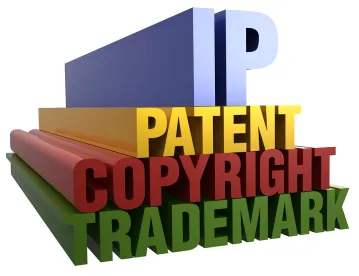Yesterday, the USPTO announced a new pilot program pursuant to which it will allow trademark registrations to be amended where the trademark owner now sells different products from those covered by the original registration due to evolving technology. In the absence of this pilot program, such trademark owners would have to abandon their existing registration and file a completely new application.
Key requirements:
1. The trademark owner can only amend the description of goods and services.
2. The trademark owner must no longer be using the mark on the goods/services listed in the registration, but must be using the mark on new goods/services that represent some evolved form of technology.
3. The underlying content and subject matter of the products on which the mark is used must not have changed.
4. It is permissible to change the description from goods to services or vice versa.
5. The trademark owner must provide new dates of first use for the new goods/services in their evolved form and is prohibited from filing an affidavit of incontestability until 5 years after the USPTO’s acceptance of the amendment.
Benefits of Using the Pilot Program:
1. The trademark owner does not have to file a new application to maintain its trademark registration merely because the use of that brand has evolved with technology.
2. Under the pilot program, all proposed amendments will be published. However, unlike a new application, interested parties cannot oppose the amendment. They can comment on it within 30 days of publication, but they cannot oppose it. Presumably, the USPTO will consider the comments of interested parties in an analogous manner to that in which it considers letters of protest.
Who Should Not Filing Under the Pilot Program:
1. If you are still using your mark on goods/services using an old technology but have added the new technology, then you must file a new application. For example, if you license software which is installed locally but now also provide your software under a SaaS model, you can’t file under the pilot program.
2. If the evolved form of technology you are using is considered to be within the scope of the description of the goods/services in your registration, you cannot use the pilot program. WARNING – this gets tricky.
For example, under TMEP §1402.07(c), a trademark applicant for “newsletters in the field of accounting” could amend to “providing on-line newsletters in the field of accounting.” Thus, this type of post-registration amendment will not be permitted under the new pilot program.
By contrast, however, the USPTO announcement expressly provides that an amendment from “downloadable software for use in database management” to “Software as a service (SAAS) services featuring software for use in database management” would be acceptable under the new pilot program.
What’s the difference between the two examples (I hear you cry)? After all, on-line newsletters are merely a substitute evolved technology for deliver of newsletters in the same way that SaaS is merely a substitute evolved technology for the delivery of software. Unfortunately, the USPTO announcement doesn’t provide any specific guidance, but I think the answer is this. In the first example, the USPTO considers “on-line newsletters” to be subset of “newsletters.” Whereas, in the second example, the USPTO does not consider “Software as a Service” to be a subset of “downloadable software.” The reason I think this is the USPTO’s view is that in TMEP §1402.07(c), the USPTO acknowledges that an applicant for “computer programs in the field of accounting” could amend to “providing temporary use of non-downloadable computer programs in the field of accounting.”
Based on this rationale, I suspect that the USPTO would also allow an amendment from “computer programs in the field of accounting” to “”Software as a service (SAAS) services featuring computer programs in the field of accounting” on the basis that “Software as a Service” is a subset of “computer programs” in this case. This is because the descriptions “computer programs in the field of accounting” and “newsletters in the field of accounting” do not specify the manner in which the goods are provided. As a result, they cover all manner of providing the goods. In the final analysis, as far as the USPTO is concerned, the issue is whether the amended description is inside or outside the scope of the original description. If it is inside, then you can’t use the pilot program (because you are free to amend your registration outside the pilot program). If it is outside, then you can use the pilot program.
What’s the Risk?
Based on these two examples, trademark owners should take care to carefully evaluate whether their existing description is broad enough to encompass any evolved technology that may be used to provide their products. If the trademark owner in the first example (“newsletters in the field of accounting”) submitted an application under the pilot program (under the mistaken belief that the original description was not sufficient), the trademark owner would (in the petition under the pilot program) have admitted that the it could no longer show use on the original goods/services.
Is the trademark owner thereafter barred from showing use as of a date that precedes the date of the pilot program petition?
If the trademark owner’s pilot program petition is denied, will the USPTO allow the trademark owner to renewal its application even after the trademark owner has admitted that it is no longer using the mark?
As a matter of equity, I would hope that the answers are “no” and “yes,” respectively. As shown above, evaluating whether an evolved technology falls within or without an original goods/services description is not always clear. A good faith, yet erroneous, filing under the new pilot program should (in the moral sense, not necessarily the legal sense) not cause a legitimate brand owner to lose its registration where the owner merely guessed wrong as to whether the USPTO would construe the new evolved technology as being inside or outside of the trademark owner’s original description. Hopefully, the USPTO will put out guidance on this issue in the future.






 />i
/>i

